Travel Guide, Ha Giang Loop
Ha Giang Loop In February: Weather & Things To Do
In February, you are certain to be amazed by a unique spectacle: the spring bloom in Ha Giang. During this month, the Ha Giang highlands enter spring, donning vibrant, youthful attire full of life. In each village, peach, plum, and mustard flowers compete to bloom, showing off their brilliant colors under the spring sun. The biting cold of the past months gives way to the gentle warmth of spring sunlight, which climbs over the mountains and fills the winding roads with its soft glow. This post will provide you all the information you need to decide whether or not to visit Ha Giang Loop in February.
Weather Ha Giang in February
The weather in Ha Giang during February is gentle, much like in other seasons there. Indeed, Ha Giang is beautiful year-round, but February – the month when spring commences, when trees sprout new buds and peach blossoms shyly bloom like a dream – holds a special charm.
In February, Ha Giang enjoys an average temperature ranging from 18 to 28 degrees Celsius. Temperatures may drop during the night and early morning. The weather is cool, no longer as cold as in winter, with clear skies. From high vantage points, you can overlook the entire valley.
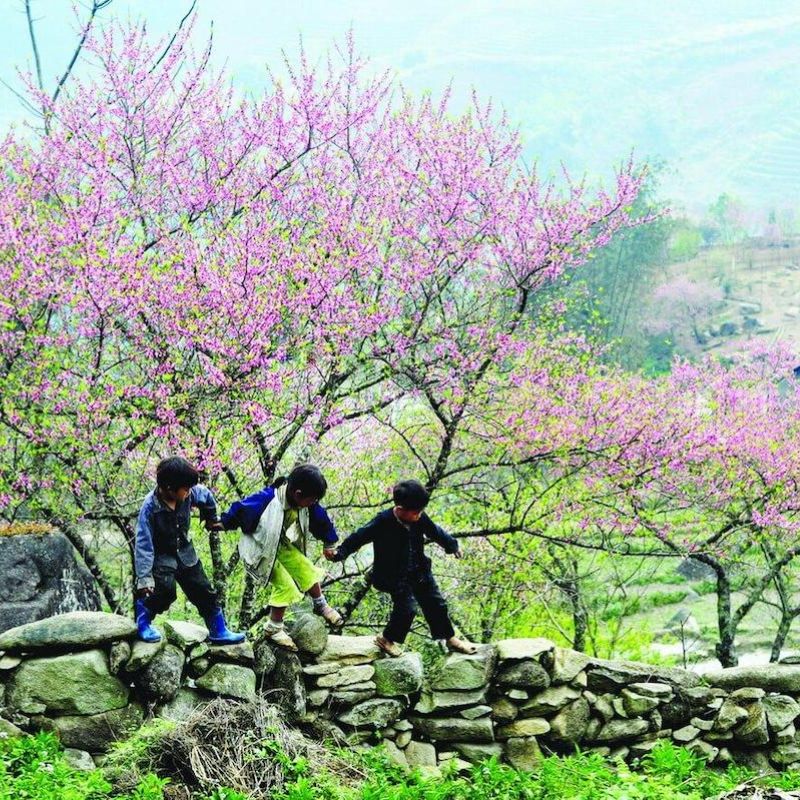
This time of year in Ha Giang sees less rainfall. Due to the high humidity, the air feels refreshingly cool, creating a romantic and extremely comfortable atmosphere. However, to ensure health is not affected by the weather and to enjoy a complete journey, it’s still advisable to carry additional warm clothing like jackets, scarves, and socks for when the temperature dips.
How to get to Ha Giang
In February, the weather in Northern Vietnam, particularly in Ha Giang, starts to warm up, making it an ideal time for travel. You can choose one of two main modes of transportation: a sleeper bus or a motorbike adventure.
Sleeper Buses
For many, taking a sleeper bus is a safe and less dusty way to travel – a notable preference among adventure seekers. Departing from Hanoi, it only takes a few hours to reach Ha Giang, allowing for a quick and convenient journey. For those who find the journey of over 300 kilometers daunting and tiring, opting for a sleeper bus can be the best choice. The My Dinh bus station offers several departures to Ha Giang throughout the day at different times: 7:00 AM, 12:00 PM, and 8:00 PM. The fare for a sleeper bus is around 300,000 VND per person per trip.
Choosing a night bus can save time, as after resting overnight, you’ll arrive in Ha Giang by 5:00 AM, ready to start your day. From there, you can either rent a motorbike to explore or hire a car for sightseeing.
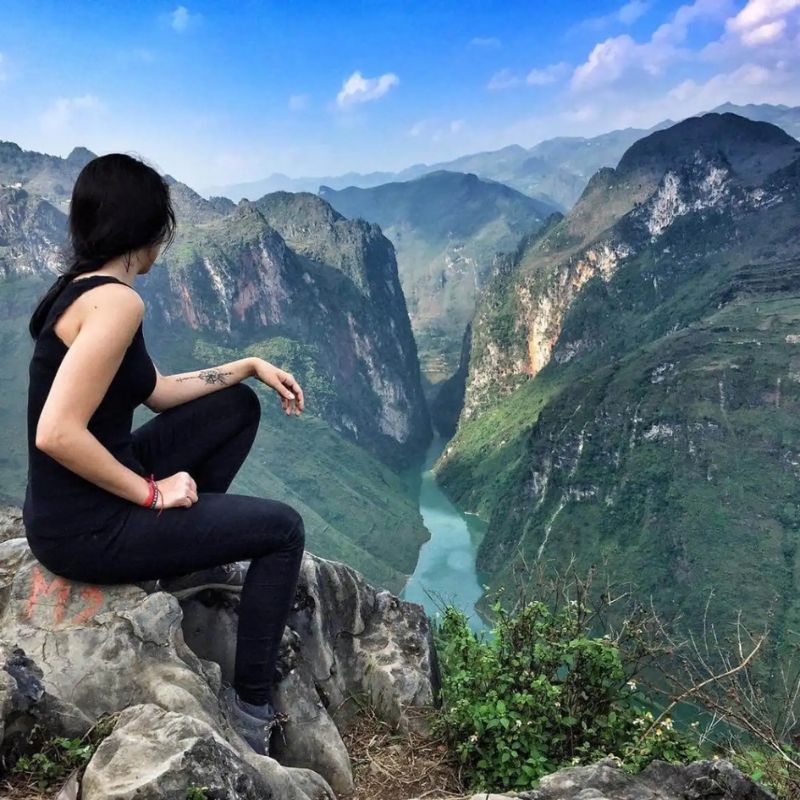
Motorbike Adventures
For those who love true exploration and adventure, motorbiking in Ha Giang Loop is an excellent choice. You can roam freely, conquer challenging roads, and enjoy the stunning scenery along the way without worrying about seasickness or the cramped and noisy environment of public transport.
Ha Giang Loop is renowned for its rugged roads and continuous mountain passes, making it an ideal destination for a few days of motorbike adventuring. You can freely enjoy the scenery and take photos along the way without the worries of motion sickness or crowded spaces. During this time, there are not many people around, so traveling to Ha Giang Loop is very convenient and smooth. Moreover, when you explore Ha Giang by motorbike, you have the flexibility to visit any attractive destination without any hindrance. This autonomy in travel allows for a more intimate and personal experience with the stunning landscapes and unique culture of the region.
Ha Giang Loop’s top tourist destinations in February
Lung Cu flag pole
Since the Lung Cu flag pole is Vietnam’s northernmost point, it makes sense that visitors should visit this well-known check-in location. You have to pass through Quan Ba, Yen Minh, and then Dong Van district in order to reach Lung Cu flag point. This historical site, of course, has a sacred significance for the Vietnamese people and symbolizes their patriotism for their nation.
Dong Van Old Quarter
One of the most well-known places that visitors should see when visiting Ha Giang in February is the Dong Van Old Quarter, which is located in the Dong Van district. Because of the tourism industry’s success. Millions of tourists visit the Dong Van Old Quarter every year. To meet the needs of their patrons, the locals also built several cafés and restaurants for this reason.
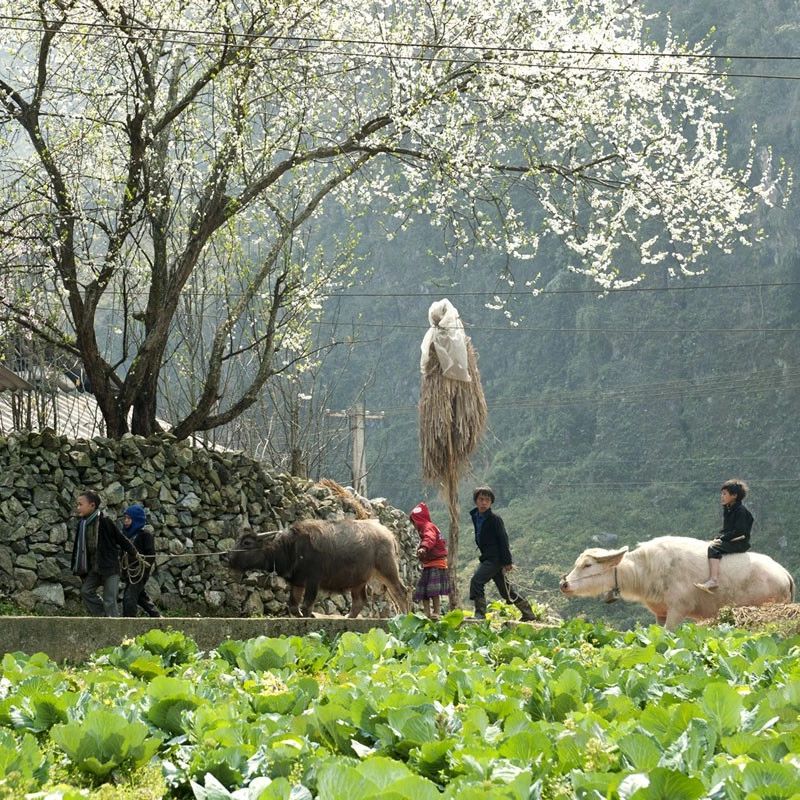
The most distinctive scene can be found in Ha Giang when Chinese architecture blends with the historic beauty of Vietnam’s mountainous region. There is no need to worry about lodging when visiting Dong Van Old Quarter, as there are a variety of homestays and hotels with unique architectural styles to choose from.
Meo Vac
Another tourist destination in Ha Giang Loop that you can visit in February is Meo Vac. This location is well-known for its fields of plum blossoms, particularly in the Meo Vac neighborhood. The stunning plum flowers’ pink and white hues have the power to mesmerize visitors to Meo Vac. Note that February is the best month to see this breathtaking scenery, so be sure to include this location on your itinerary.
Meo Vac is also well-known for Ma Pi Leng, one of Vietnam’s Four Great Passes and a backpacker’s paradise. Not to be overlooked is the Nho Que River, which flows beneath the pass and offers kayaking for those looking for exciting activities.
Ha Giang Loop’s dishes in February
When visiting Ha Giang Loop in February, travelers can indulge in a variety of local specialties. Don’t forget to add the following to your must-try list:
- Buckwheat Cake (Bánh Tam Giác Mạch): These soft and fluffy cakes have a gentle sweetness and a unique, slightly spicy flavor from wild herbs, making them a distinct treat.
- Thắng Dền: Made from glutinous rice flour, these round cakes resemble bánh trôi and can be filled with bean paste or kept plain for a vegan option. Served in a hot, sweet syrup with coconut milk and ginger, they are especially comforting in February’s cool weather, which still carries a hint of winter chill.
- Thắng Cố: A must-try in Ha Giang, this special dish is made from the bones, meat, and offal of livestock, including horse meat. It’s a unique culinary experience not to be missed.
- Five-Color Sticky Rice (Xôi Ngũ Sắc): Ha Giang is famous for its aromatic and sticky five-color rice. The colors are naturally derived, such as red from Gac fruit or red rice leaves, yellow from old turmeric, green from leaves like ba soi, dried thành ngạnh, or even from ginger leaves, pomelo peel, or bitter bamboo shoot peel, and purple from black rice leaves or sau sau leaves.
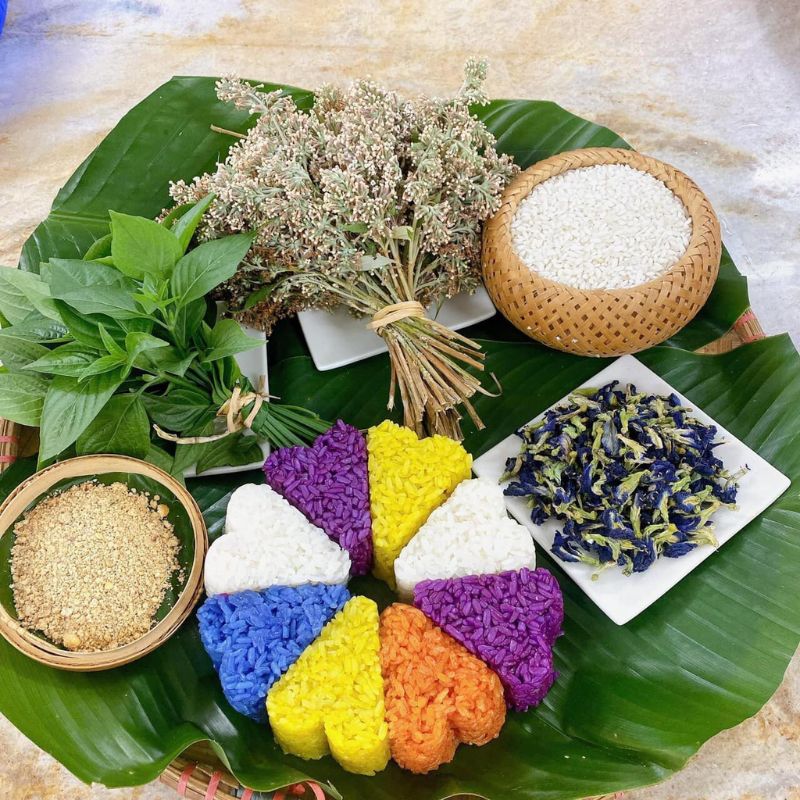
- Ấu Tẩu Porridge (Cháo Ấu Tẩu): This unique porridge has a rich, spicy, fragrant, and slightly bitter taste. It’s made from sticky rice grown on terraced fields, combined with Ấu Tẩu root, pork trotters, and distinctive spices. It’s a warming dish perfect for the cool climate of Ha Giang in February.
- Ha Giang Sour Pho (Phở Chua Hà Giang): Another culinary gem is Ha Giang’s Sour Pho, featuring fresh rice noodles served in a tangy broth made from vinegar, sugar, and tapioca flour, meticulously stirred and boiled. The dish is enhanced with fried pork, sausage, roasted duck, shredded papaya or cucumber, and fresh garlic. It’s topped with a ladle of tangy broth, creating an exceptionally flavorful experience.
- Steamed Rice Rolls (Bánh Cuốn): Ha Giang’s version of Bánh Cuốn is unique, served with hot soup, pork sausage, and scallions, offering a distinct flavor compared to the Southern provinces’ version. This dish is a must-try for its unique blend of flavors and textures, embodying the local culinary essence.
Things to note when traveling to Ha Giang at this time
When planning a trip to Ha Giang, there are several key considerations to keep in mind:
Pre-Plan Your Trip
Many travelers tend to be casual about domestic travel and often don’t have a set itinerary. Ha Giang, located in the far north of Vietnam, is predominantly mountainous and home to many ethnic minorities. Therefore, it’s important to plan ahead and not rely on spontaneous decisions upon arrival, as the terrain and cultural diversity can present unexpected challenges.
Thoroughly Check Your Vehicle if Choosing a Motorbike Tour
Traveling through Ha Giang Loop by motorbike can be an incredible experience, offering unforgettable adventures. However, the terrain in Ha Giang differs significantly from the plains: the roads are rugged, and they can be quite poor in some places. Also, finding a garage or repair service can be difficult if your bike breaks down mid-journey. Proper preparation and ensuring your vehicle is in good condition are crucial.
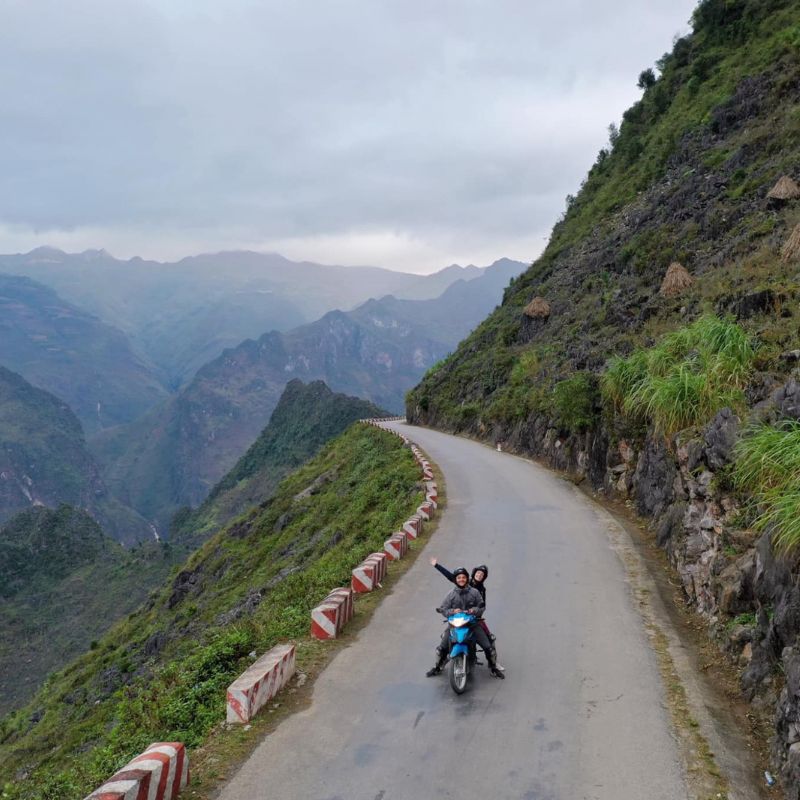
Pack Appropriately
Many travelers, especially those with little experience, tend to overpack or bring unnecessary items, making the journey more challenging. Bulky clothing or high heels might be great for photos but are impractical for traveling in mountainous regions like Ha Giang. It’s advisable to pack light, comfortable, and practical clothing, along with sports shoes and basic personal items. This way, your baggage won’t be cumbersome, allowing you to explore Ha Giang with ease and comfort.
In conclusion, exploring the Ha Giang Loop in February offers a truly unique and mesmerizing experience. This time of year marks a transformation of the landscape into a vibrant tapestry of colors, with blossoming flowers and the soft warmth of spring replacing the harsh winter cold. The region’s natural beauty is at its peak, providing an ideal backdrop for both avid adventurers and those seeking a peaceful retreat. Riding through the loop in this season not only promises breathtaking views but also a deeper connection with the rich cultural tapestry of the local communities.
FAQs
Are the roads on the Ha Giang Loop challenging in February?
The roads can be challenging throughout the year due to their winding nature and mountainous terrain. However, in February, the road conditions are generally good as the weather is dry, making it safer for riding.
How long does it take to finish the Ha Giang Loop?
Typically, it takes 3 to 5 days to complete the loop, depending on your pace and how much time you spend exploring each area.
What should I pack for the Ha Giang Loop in February?
Bring layered clothing to adapt to the changing temperatures throughout the day. Essentials include a warm jacket for cooler mornings and evenings, comfortable riding gear, sunscreen, and possibly rain gear. Don’t forget your camera for the stunning spring blossoms!
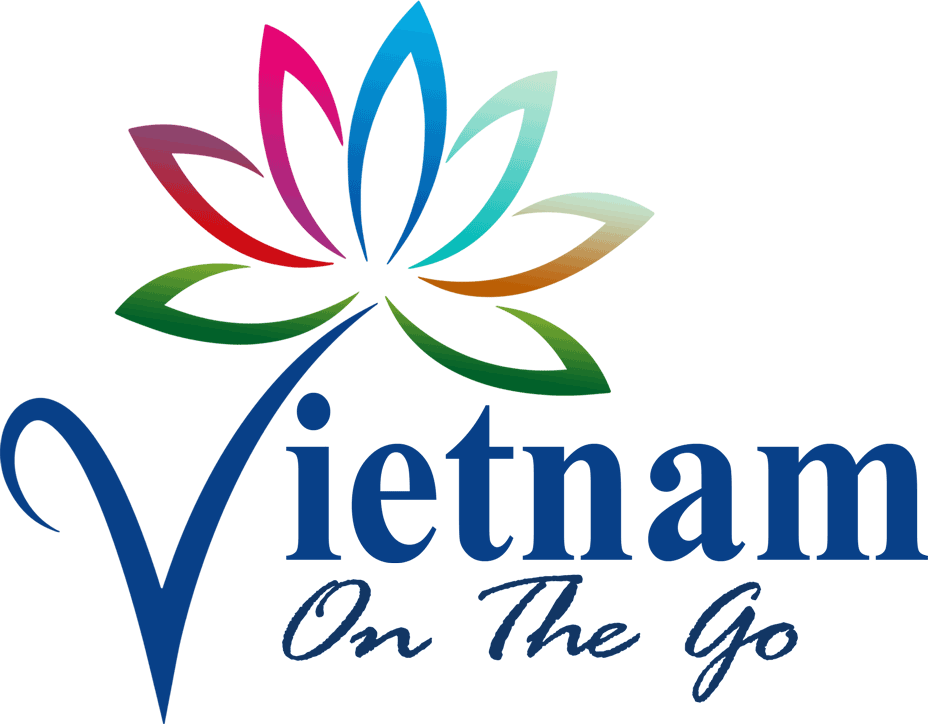
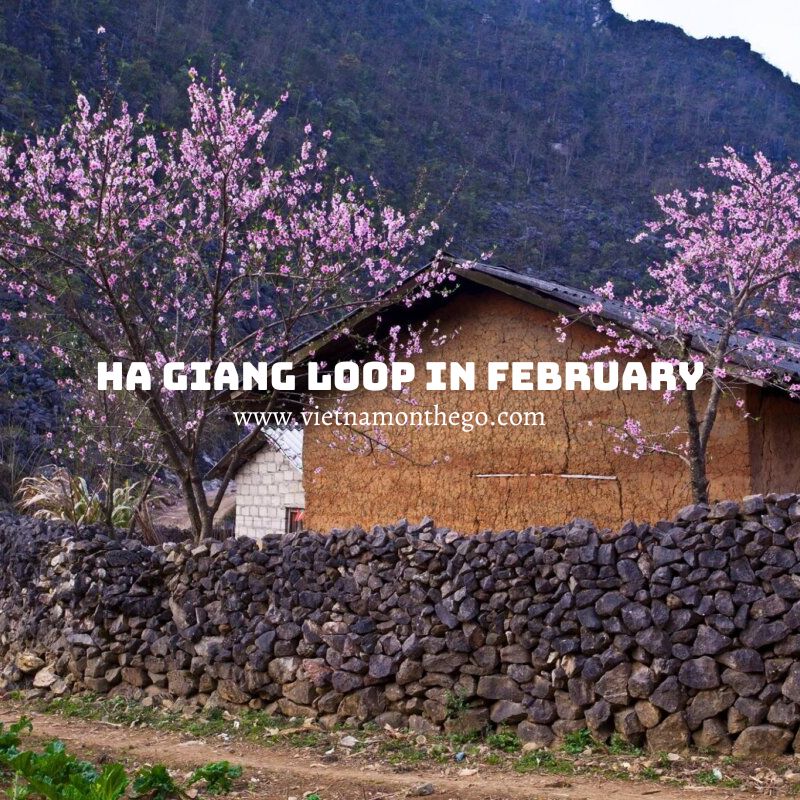
![[3 DAYS 4 NIGHTS] Ha Giang Loop Motorbike Tour from Hanoi](https://vietnamonthego.com/wp-content/uploads/2024/03/ha-giang-loop-tour-6-300x300.jpg)
![[4 DAYS 5 NIGHTS] Ha Giang Loop Motorbike Tour from Hanoi](https://vietnamonthego.com/wp-content/uploads/2024/03/ha-giang-loop-tour-300x300.jpg)